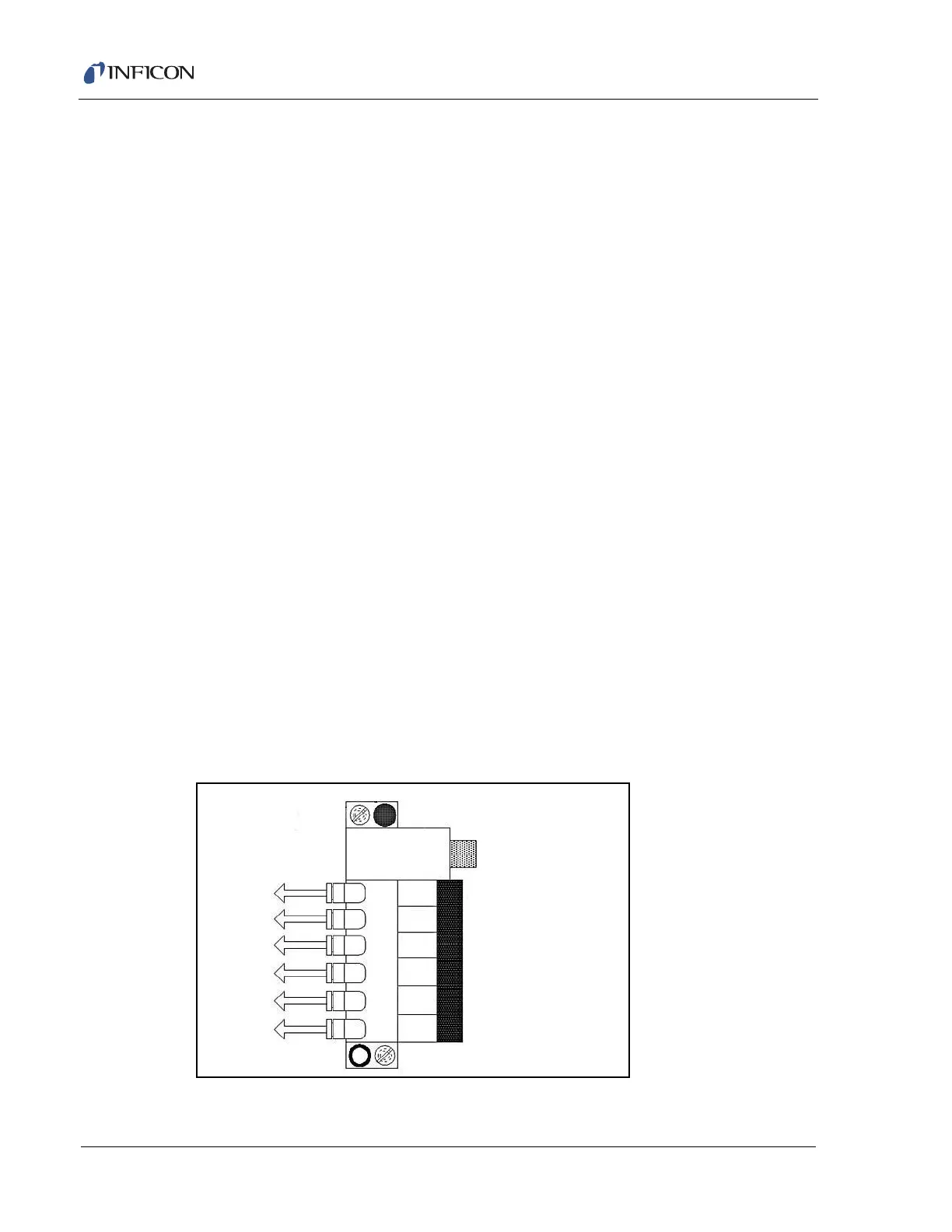4–6
Transpector CPM Operating Manual
4.3.5 Solenoid Valves
The solenoid-controlled valves are a group of valves joined together as one
manifold assembly which is mounted to a bracket on the Turbo Molecular Pump
foreline block. The valves are controlled either by the CPM controller rocker
switches or the Valves Aux I/O connector.
When solenoid valves are activated, compressed air from the input air supply
(ranging 58–100 psi (gauge) (4–6.9 bar) [400–690 kPa]) will open the appropriate
valve. The recommended setting is 75-80 psi (gauge) (5.17 to 5.52 bar) [517 kPa
to 552 kPa]. All valves are electropneumatically operated. There are six solenoid
valves: (See Figure 4-3.)
V0—Foreline isolation valve and nitrogen purge valve on corrosive systems.
Automatically opened and closed by the start/stop of the pumping system.
V1—Low pressure orifice valve for the HexBlock or the capillary sampling option.
Configured depending on the application. Typically used for background
monitoring.
V2—High pressure orifice valve for the HexBlock or the capillary sampling option.
Typically used for process pressure sampling. User configured depending on the
application.
V3—High conductance valve (1 mT maximum nominal pressure)
V4—Bypass valve used in conjunction with the high pressure bypass option or the
capillary sampling option
V5—Calibration reference
For more details about the function of each valve, see section 6.1.1 on page 6-2.
NOTE: Each solenoid has a red indicator that illuminates when the solenoid is
activated.
Figure 4-3 Solenoid valve block
Exhaust Muffler
Air Supply
Line Connection
9-Pin D Connector
Air
Lines
To
Valves
V3
V1
V0
V2
V5
V4
